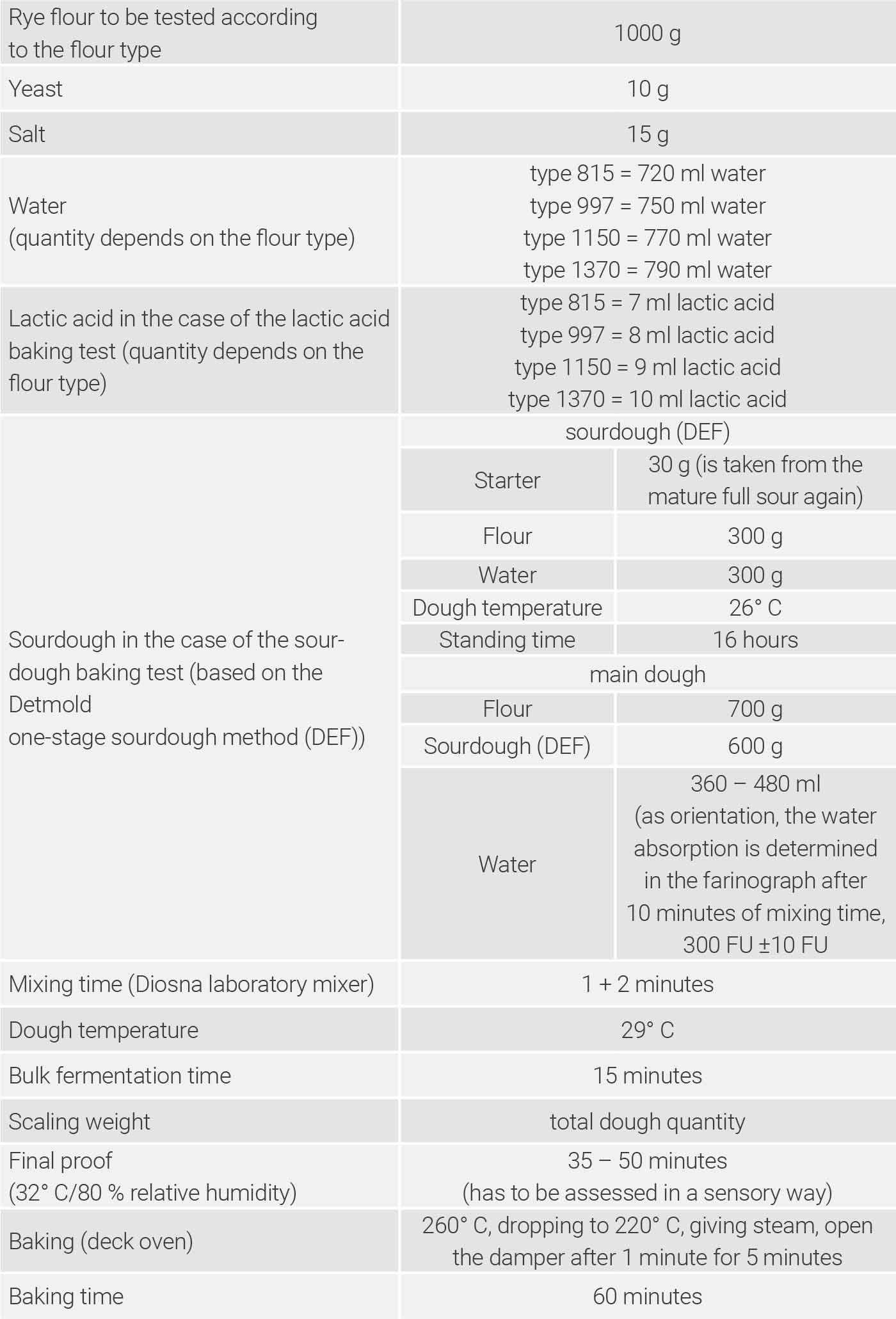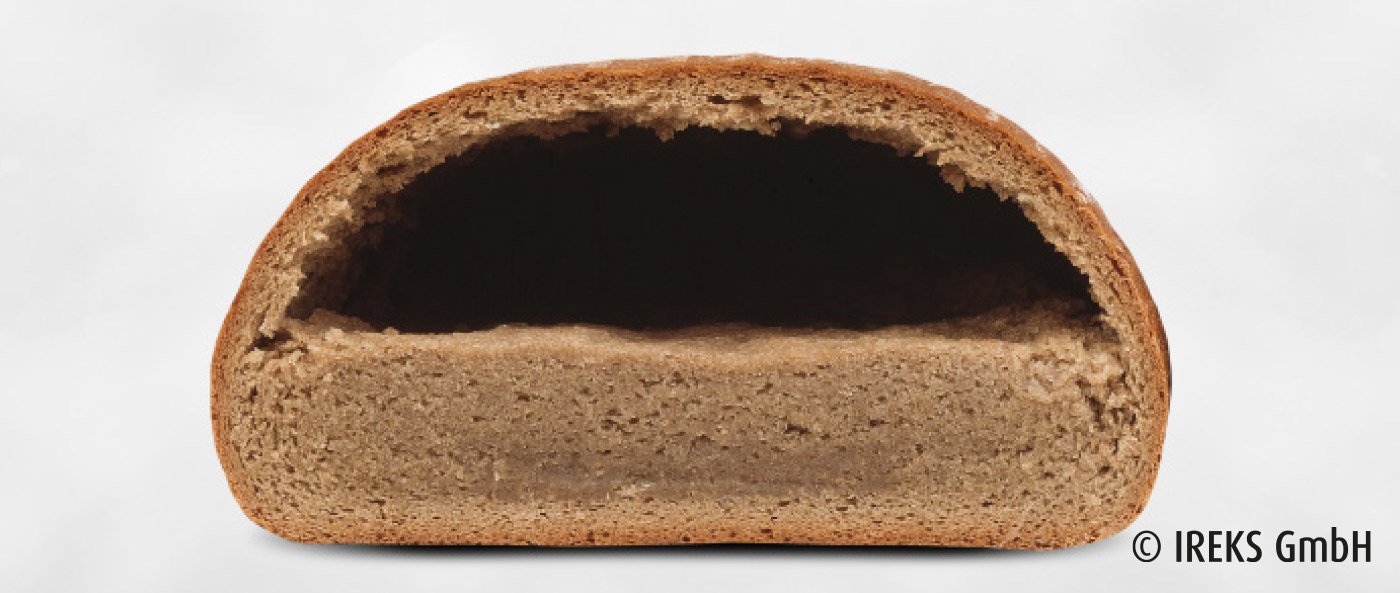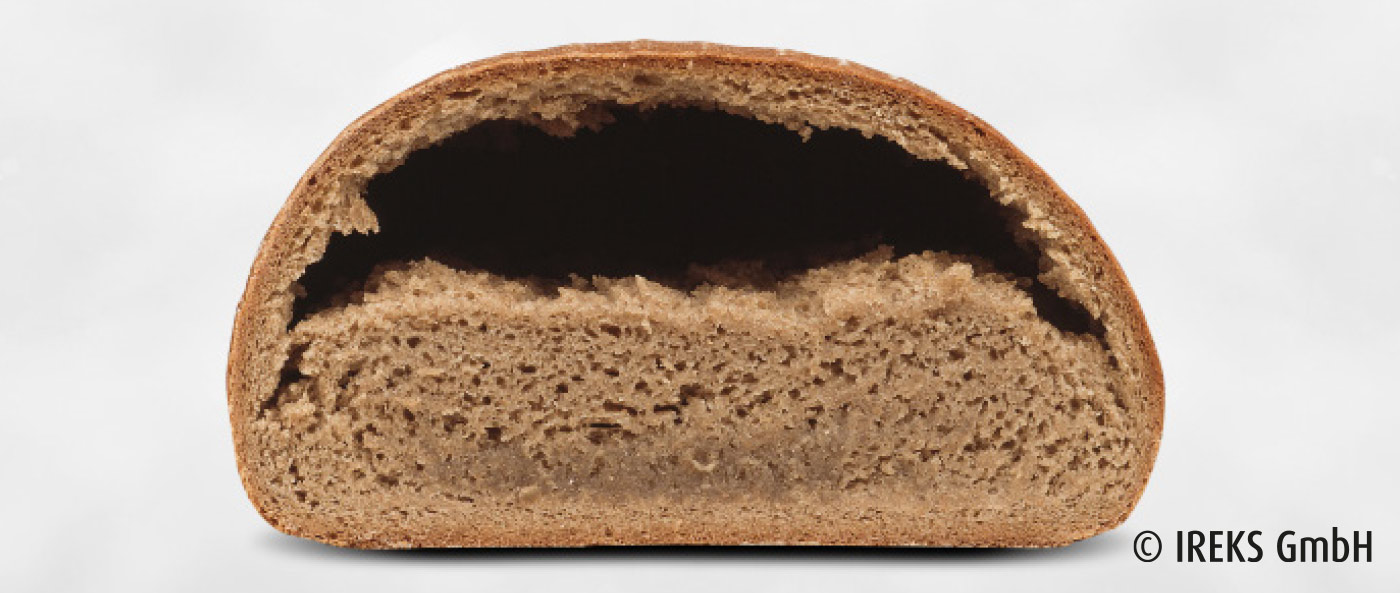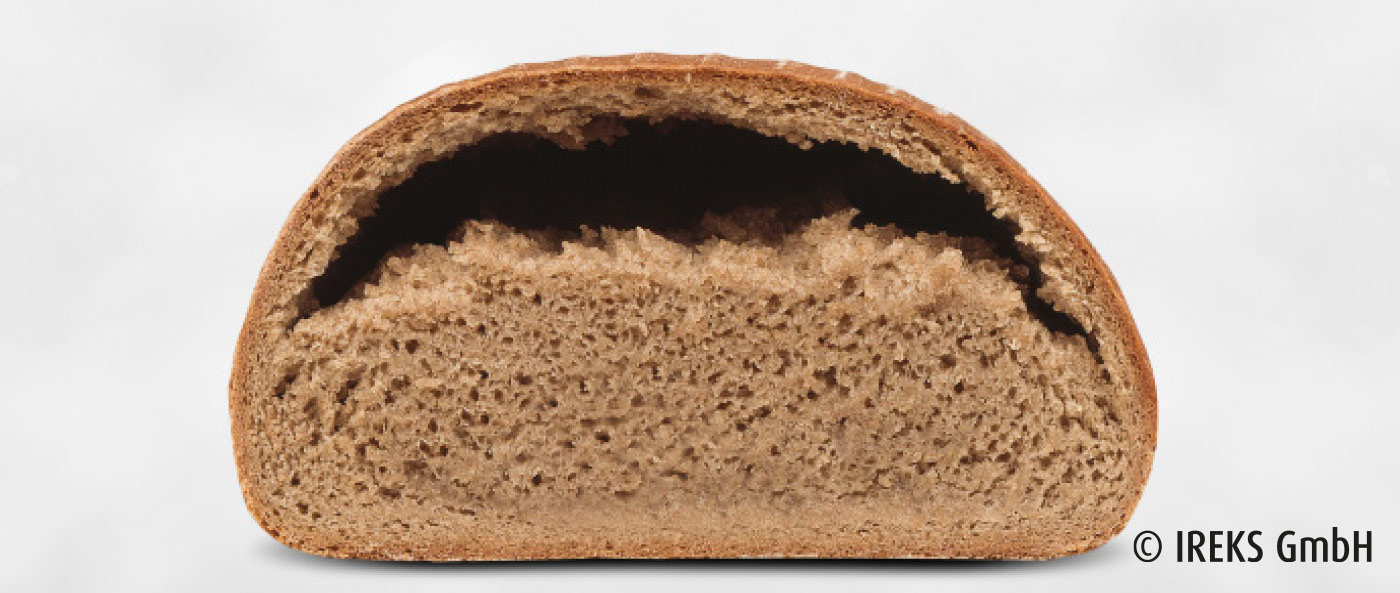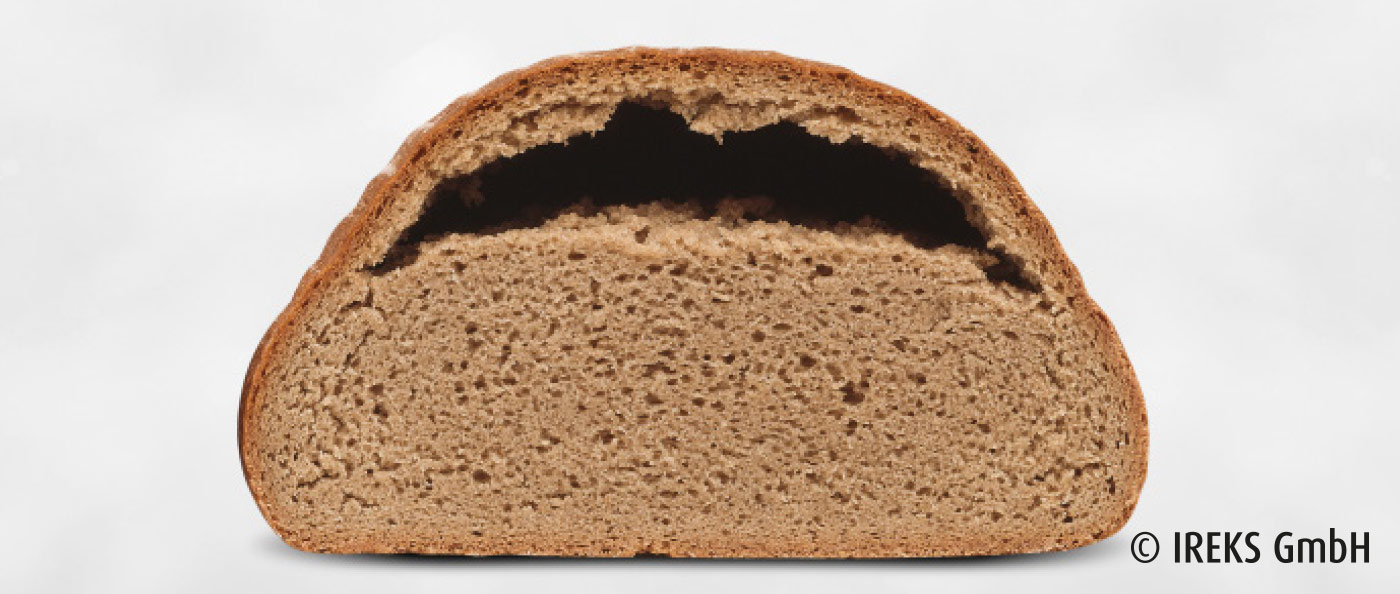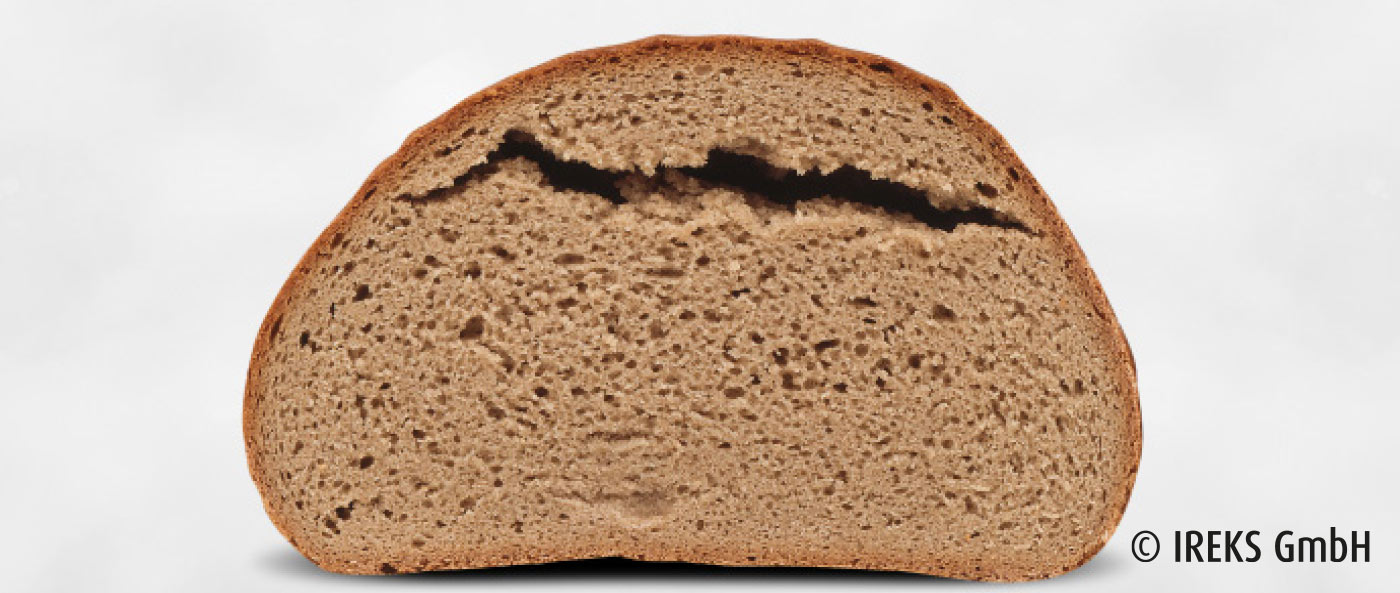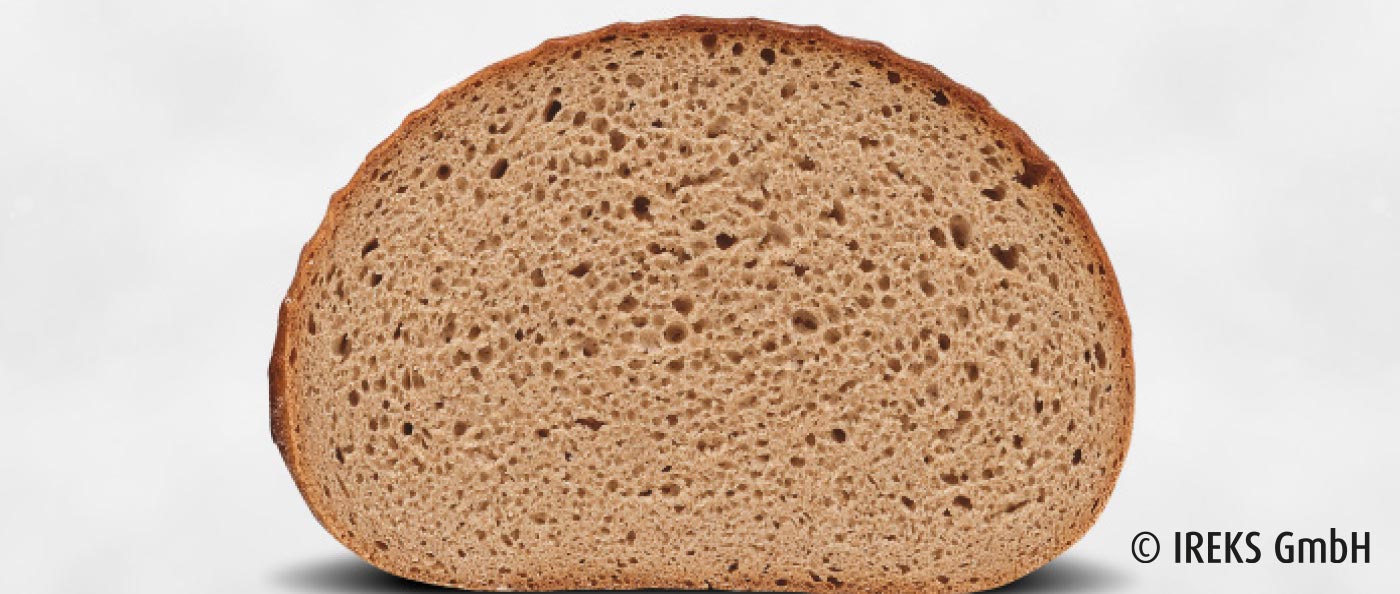In addition to the bread baking test for wheat, a baking test to evaluate rye flours also exists, whereby oven bottom bread is made. The rye baking test can be carried out as a yeast, a lactic acid or a sourdough baking test. In this case, the yeast baking test provides the baking value without acidification, the lactic acid baking test the baking value in the case of weak acidification by the addition of lactic acid and the sourdough baking test the baking value in the case of optimum acidification with sourdough.
After unloading from the oven, the bread has to cool and be stored for 15 – 20 hours before it is evaluated. This should take place in a storage chamber so that the bread does not dry out.
Evaluation
In addition to parameters such as fermentation time and volume yield, mainly the dough consistency is evaluated as well as the sensory properties of the bread. In the case of the baking ability test for rye, the baking value of a rye flour can already be recognized very well based on the crumb appearance, as rye doughs without acidification often result in a very damp and not very elastic crumb up to a badly separated crust.
In the case of the lactic acid baking test, the crumb elasticity and the taste can also be examined.
In the case of the sourdough baking test, the acidifying capability of the flour can also be assessed in addition to the crumb elasticity and the taste. This baking test is closest to the sourdough method of the generally common method of production.

